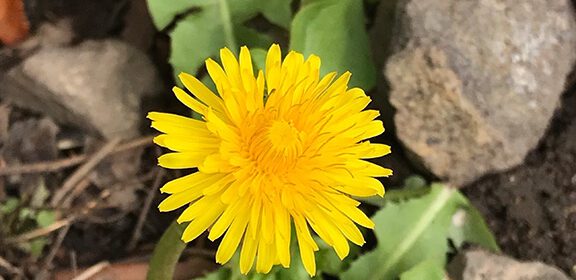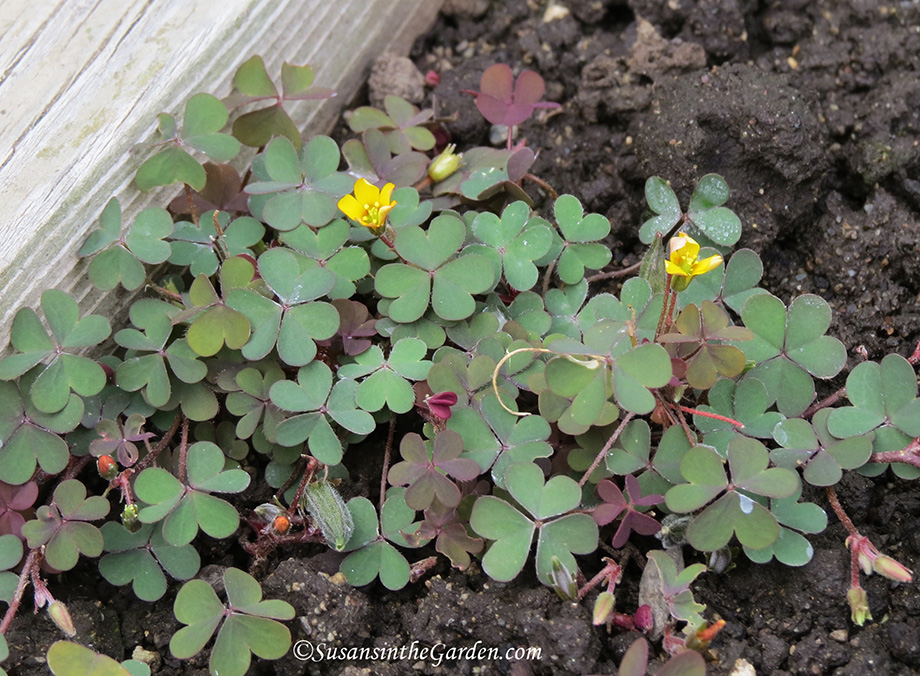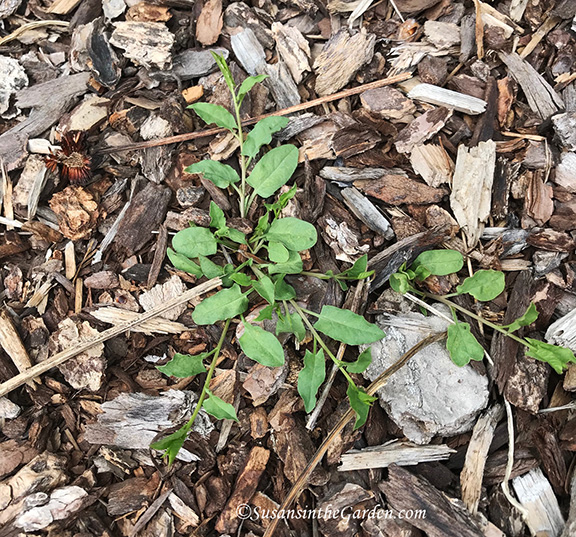June 6 Column: Dealing with Weeds

Dealing with weeds in your garden isn’t a whole lot of fun, is it? I think we all have our most dreaded weeds that are a nightmare to control. So for this week’s garden column, I wrote about why it’s important to keep up with pulling weeds as well as the things we gardeners can do to reduce this odious task. You can read it in today’s edition of The Spokesman-Review: Pull out those weeds to keep them from competing with your plants. (or you can read the text of my column at the bottom of this post.)
The two weeds I despise the most are quackgrass, creeping woodsorrel and field bindweed. I’m not all that crazy about dandelions either but I know how important they are pollen sources for bees so I try to turn a blind eye to them early in the season. Which weeds are the bane of your existence? I’d be interested to know.
For my latest video, I decided to talk even more about dealing with weeds because I wanted to explain what types of things we’re doing in our garden to keep weeding to a minimum. I’m hopeful my tips will cut down on the amount of weeding you have to do and make it more of a joy to go out to your garden!
And here is the text of my column:
By Susan Mulvihill
For The Spokesman-Review
Let’s hear it for weeds! Since I didn’t hear anyone cheering, I will assume that you agree weeds are the bane of a gardener’s existence.
Some are downright dreadful. My most despised weed is quackgrass, which spreads by rhizomes under the soil surface. I try so hard to pull every little bit of them but I always miss something which means they come back stronger than ever. Another bothersome weed is creeping woodsorrel which has exploding seed capsules that can shoot seeds up to 16 feet away. While dandelions can be annoying in the lawn, I try to remember they are a source of pollen for bees in early spring.
Keeping up with weeds in the vegetable garden is vital because they compete with our crops for moisture and nutrients. What’s more, they can really gain a foothold if you don’t engage in regular weeding sessions.
Here are a few tips to at least cut back on the amount of weeding you’ll have to do:
Avoid cultivating the soil surface during the season. While it might look more attractive to have fluffy soil, this activity brings weed seeds to the surface where they will be only too happy to germinate and grow.
Don’t let weeds go to flower because your problems will multiply exponentially. If you do pull some with flowers, don’t add them to your compost pile. That’s because the seeds will mature and cause more problems for you.
Some weeds have tap roots that are tough to pull up, but do the best you can because the root remnants will send up new sprouts. No matter which weed species you’re trying to remove, it’s a good idea to understand the type of root they have so you can gain the upper hand.
Mulch is a gardener’s best friend. Place a thick layer of it on the soil surface surrounding your veggie plants. This serves two purposes: it makes it more difficult for weed seeds to germinate and helps conserve moisture in the soil. My mulch of choice is grass clippings from our lawn since we don’t use any herbicides on it. Shredded leaves or weed-free straw also work well.
Barriers are another option. I use weed-block fabric, also known as landscape fabric, underneath the permanent paths in our garden and then cover it with a few inches of bark mulch or arborist’s wood chips. This method dramatically cuts down on the weeding I have to do. I do not recommend using the fabric within landscape beds because it can become a nightmare to deal with. Plant roots will grow into it and the fabric affects how moisture moves through it, which impacts how plants grow.
What about using pre-emergent products for weed control? It’s important to understand that they won’t affect existing weeds, only those that try to sprout after the product has been applied. Synthetic pre-emergent products contain Trifluralin, which is very toxic to fish and amphibians and is potentially harmful to pollinators. Because of this, I can’t in good conscience recommend them.
There are organic pre-emergent products on the market where corn gluten meal is the active ingredient. Unfortunately, research trials have not found it to be highly effective for weed prevention. Additionally, when corn gluten meal is applied to existing weeds, it acts as a fertilizer for them.
Even though weed-pulling isn’t a whole lot of fun, it appears to be the most effective way to control them.
Susan Mulvihill is author of “The Vegetable Garden Pest Handbook.” She can be reached at Susan@susansinthegarden.com. Watch this week’s “Everyone Can Grow a Garden” video at youtube.com/susansinthegarden.


